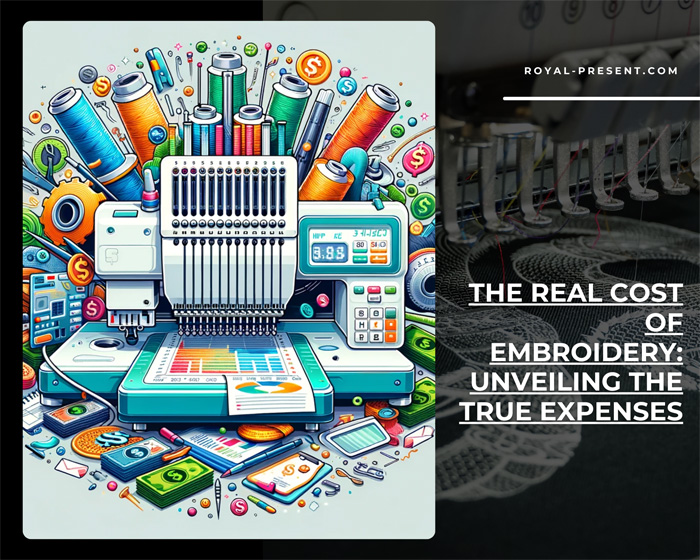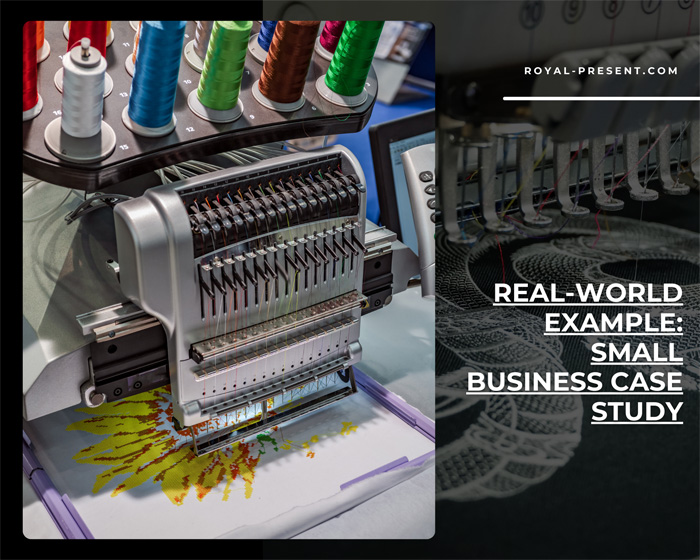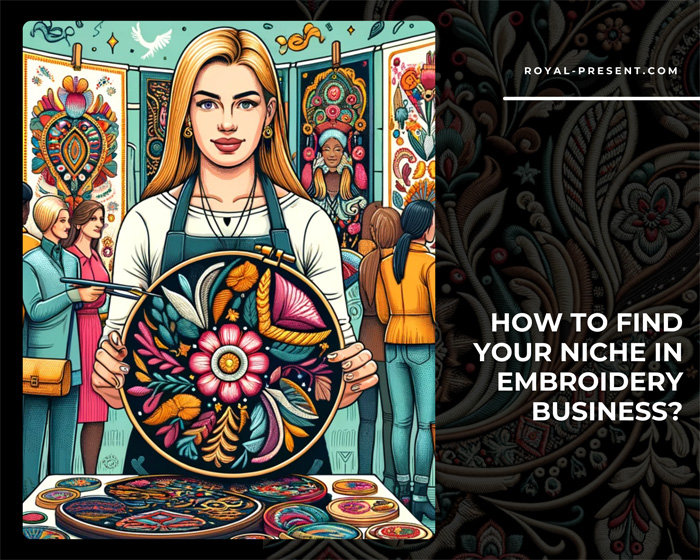
Embroidery has long been a popular method for enhancing various products with custom designs, offering a blend of elegance and durability. However, the actual cost of embroidery, especially when it involves machine embroidery designs, is often misunderstood or underestimated. How much does embroidery cost? This article delves into the factors influencing the cost of machine embroidery, backed by real-case examples, to give you a comprehensive understanding.
1. Initial Setup and Digitizing Costs
One of the primary costs in machine embroidery is the initial setup, which includes digitizing the design. Digitizing is converting your logo or design into a format the embroidery machine can understand. For instance, a local sports team looking to embroider their logo on jerseys may pay around $50 to $150 for digitizing, depending on the complexity of the design. This is a one-time cost, as the digitized design can be reused for future projects.
2. Material and Thread Costs
The type of material and thread used significantly affects the overall cost. For instance, high-quality threads like rayon or polyester, which are more durable and offer a more comprehensive range of colors, can increase the price. Consider a case where a small business opts for premium threads to ensure their embroidered aprons last longer. This decision might raise the cost but provides a longer-lasting product.
3. Machine Wear and Maintenance
The cost of maintaining embroidery machines is often overlooked. Regular servicing is essential to keep them running smoothly. For example, an embroidery business might spend around $500 annually on maintenance, indirectly affecting the pricing of their embroidery services.
4. Labor Costs
Embroidery is a skill-intensive process, even with machines. Skilled operators are needed to ensure quality output. For example, a boutique specializing in custom embroidery might have higher pricing due to the expertise of their staff, reflected in the labor costs included in their pricing structure.
5. Complexity and Size of the Design
The complexity and size of the design directly impact the stitch count, which is a crucial cost factor. A complex design with a high stitch count will be more expensive. For instance, a detailed floral pattern on a dress might require thousands of stitches, leading to a higher price than a simple monogram.
6. Number of Colors Used
More colors mean more time and resources. A business logo with multiple colors will cost more than a monochromatic design. Some companies, for example, do not charge extra for adding different thread colors, but this is an exception rather than the rule in the industry.
7. Durability and Quality
Embroidery is known for its durability. This long-lasting quality can make it a more cost-effective option in the long run. For instance, a restaurant opting for embroidered uniforms may find that they outlast printed ones, proving more cost-effective over time.
8. Quantity of Order
Bulk orders often reduce the cost per item. Due to economies of scale, a company ordering 100 embroidered shirts will likely pay less per shirt than a small order of 10 shirts.

How much does embroidery cost: Unveiling the True Expenses
The Real Cost of Embroidery Example: Small Business Case Study
Consider a small business that decided to embroider its logo on employee uniforms. The digitizing cost was $100, and each shirt cost $15 to embroider. For 20 shirts, the total embroidery cost was $300, plus the digitizing fee. However, this investment enhanced their brand image and employee morale, proving to be a worthwhile expenditure.
Calculating the cost of machine embroidery based on the number of stitches is a common approach that allows for a more accurate estimation of production expenses. Here’s a basic formula for calculating the cost of embroidery per 1,000 stitches:
-
Determine the Base Rate per 1,000 Stitches: This can vary depending on your region, the quality of materials used, and the complexity of the work. Let's assume the base rate is $1.50 per 1,000 stitches.
-
Consider Setup and Preparation Costs: This includes expenses for design and machine setup. This cost might be a fixed fee per job, for example, $20.
-
Add Any Additional Costs: This could include the cost of materials, special threads, rush orders, etc.
Here's a sample calculation:
- Suppose you have a design that requires 10,000 stitches.
- Base Rate: $1.50 per 1,000 stitches.
- Setup and Preparation Cost: $20.
- No additional costs.
Calculation:
- Total stitch count: 10,000 / 1,000 = 10
- Total cost for stitches: 10 * $1.50 = $15
- Plus setup cost: $15 + $20 = $35
Therefore, The Real Cost of Embroidery for a design with 10,000 stitches would be approximately $35. However, it's important to remember that this is a simplified example. Actual prices can vary based on a multitude of factors, including location, equipment used, design complexity, and material quality.
To perform a more complex calculation of the cost of machine embroidery per 1,000 stitches, let's consider various inputs including the cost of materials, labor, equipment depreciation, and other expenses.
Parameters for Calculation:
- Base Rate per 1,000 Stitches: $1.50 (varies based on design complexity and thread used).
- Setup and Preparation: $20 (one-time fee for design and machine preparation).
- Material Costs: $0.10 per embroidery (includes cost of fabric and threads).
- Labor Costs: $0.30 per 1,000 stitches (payment for machine operator's labor).
- Equipment Depreciation: $0.05 per 1,000 stitches (accounting for wear and maintenance of equipment).
- Additional Expenses: $0.10 per 1,000 stitches (electricity, rent, etc.).
Sample Calculation:
- Total Stitch Count: 10,000 (for simplicity of calculation).
- Base Rate: 10 * $1.50 = $15.00.
- Setup and Preparation: $20.00 (fixed cost).
- Materials: 10 * $0.10 = $1.00.
- Labor Costs: 10 * $0.30 = $3.00.
- Equipment Depreciation: 10 * $0.05 = $0.50.
- Additional Expenses: 10 * $0.10 = $1.00.
Total Cost:
- Total Embroidery Cost: $15.00 + $20.00 + $1.00 + $3.00 + $0.50 + $1.00 = $40.50.
Therefore, the full cost of embroidering a design with 10,000 stitches, considering all the aforementioned expenses, is approximately $40.50. This example illustrates how various factors can increase the overall production cost of embroidery.
For a comprehensive and advanced calculation of embroidery costs per 1,000 stitches, multiple intricate factors should be taken into account. This method is more detailed and considers every aspect that can influence the final cost. Here's a breakdown of the most critical elements:
Advanced Factors for Embroidery Cost Calculation:
1. Detailed Base Rate Calculation:
- Stitch Complexity: Cost varies for simple, moderate, and complex stitch patterns.
- Thread Type: Specialty threads (metallic, variegated, etc.) can be more expensive.
2. In-Depth Setup and Digitizing:
- Design Complexity: More complex logos require more time for digitizing.
- Software Updates & Licensing: Costs for maintaining up-to-date digitizing software.
3. Comprehensive Material Costs:
- Fabric Quality: Higher-quality fabrics increase costs.
- Thread Consumption: More stitches or dense designs use more thread.
4. Labor Cost Factors:
- Operator Skill Level: Skilled artisans may command higher wages.
- Efficiency & Speed: Faster turnaround times might incur higher labor rates.
5. Equipment Costs:
- Depreciation Based on Usage: More frequent use leads to quicker depreciation.
- Maintenance & Repairs: Regular upkeep and occasional repairs.
6. Utility Costs:
- Power Usage: Embroidery machines' electricity consumption.
- Space Utilization: Cost of the physical space occupied by the equipment.
7. Additional Overhead:
- Administrative Expenses: Management, marketing, customer service.
- Insurance & Compliance Costs: Protecting against business risks.
8. Market Factors:
- Regional Pricing Variations: Costs can vary significantly by location
- Competitive Pricing Analysis: Understanding market rates to remain competitive.
How much does embroidery cost - Real-World Example:
Let's consider an embroidery shop tasked with creating a highly detailed logo on premium fabric. The shop uses top-grade threads and has expert artisans. The calculation would involve:
- Base Rate: Adjusted for thread type and stitch complexity.
- Setup and Digitizing: Higher due to complex design.
- Material Costs: Premium fabric and thread.
- Labor Costs: Higher for skilled labor and efficiency.
- Equipment Costs: Including frequent maintenance.
- Utilities and Overhead: All relevant administrative and operational costs.
- Market Factors: Adjusting for regional cost differences and competitive rates.
This advanced approach provides a more accurate and tailored cost analysis, crucial for businesses focusing on high-quality, custom embroidery projects. It ensures that all aspects of the embroidery process are fairly compensated, while also allowing businesses to remain competitive and profitable. This method requires a deep understanding of both the technical aspects of embroidery and the business environment in which it operates.

How much does embroidery cost: Unveiling the True Expenses
Let's consider a more complex example of calculating the cost of machine embroidery per 1,000 stitches, taking into account a variety of factors and real monetary values:
Detailed Factors for Embroidery Cost Calculation:
- Detailed Base Rate:
Stitch Complexity: $1.50 per 1,000 stitches for simple, $2.00 per 1,000 stitches for medium, and $2.50 per 1,000 stitches for complex patterns.
Thread Type: Using specialty threads (e.g., metallic) increases the cost by 10%.
- In-Depth Setup and Digitizing:
Design Complexity: $20 for simple, $40 for medium, and $60 for complex designs.
Software Updates & Licensing: $5 per order.
- Material Costs:
Fabric Quality: Additional $0.15 per embroidery for high-quality fabric.
Thread Consumption: Additional $0.10 per embroidery for high-density stitch designs.
- Labor Costs:
Skill Level of Operator: $0.35 per 1,000 stitches for highly skilled professionals.
Efficiency & Speed: Additional $0.10 per 1,000 stitches for rush orders.
- Equipment Costs:
Depreciation Based on Usage: $0.07 per 1,000 stitches.
Maintenance & Repairs: $0.05 per 1,000 stitches.
- Utility Costs:
Electricity: $0.03 per 1,000 stitches.
Space Utilization: $0.02 per 1,000 stitches.
- Additional Overhead:
Administrative Expenses: $0.05 per 1,000 stitches.
Insurance & Compliance: $0.04 per 1,000 stitches.
- Market Factors:
Regional Pricing Variations: Additional $0.10 per 1,000 stitches in certain regions.
Competitive Pricing Analysis: Adjust by 5% if necessary.
Sample Calculation:
Let's assume you have an order for embroidering a complex logo (10,000 stitches) on high-quality fabric, requiring a fast turnaround. The calculation would be as follows:
- Base Rate: 10 * $2.50 = $25.00 (for complex patterns).
- Setup and Digitizing: $60.00 (complex design) + $5.00 (software).
- Materials: $1.50 (fabric and threads).
- Labor Costs: $3.50 (specialists) + $1.00 (rush).
- Equipment and Utility Costs: $1.20.
- Overhead Costs: $0.50.
- Market Factors: Additional 5% of the total amount.
Total Cost:
- Total Embroidery Cost: $25.00 + $65.00 + $1.50 + $4.50 + $1.20 + $0.50 = $97.70.
- With Market Factors: $97.70 * 1.05 ≈ $102.59.
Therefore, the full cost of embroidering a complex design of 10,000 stitches on high-quality fabric, considering all factors and urgency, would be approximately $102.59. This example demonstrates how a detailed approach to calculation can provide a more accurate understanding of all expenses associated with embroidery.
Conclusion
Understanding How much embroidery costs involves considering various factors, from setup and material costs to labor and maintenance expenses. While it may seem more expensive upfront than other customization methods, its durability and quality often offer better long-term value. By analyzing these factors, businesses can make informed decisions about incorporating machine embroidery designs into their products, ensuring quality and cost-effectiveness.
You may also like
How to find your niche in embroidery business?

Author: Ludmila Konovalova
My name is Ludmila Konovalova, and I lead Royal Present Embroidery. Embroidery for me is more than a profession; it is a legacy of my Ukrainian and Bulgarian heritage, where every woman in my family was a virtuoso in cross-stitch and smooth stitching. This art, passed down through generations, is part of my soul and a symbol of national pride.
Date: 28.12.2023


 Get Sign-In Link
Get Sign-In Link Login with Google
Login with Google Login with Facebook
Login with Facebook Login with Amazon
Login with Amazon Login with Paypal
Login with Paypal